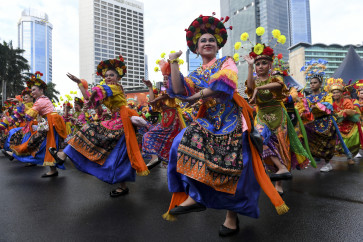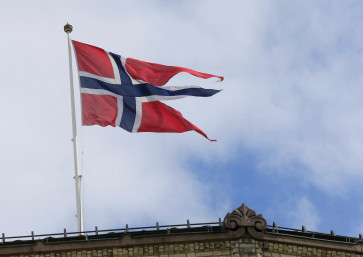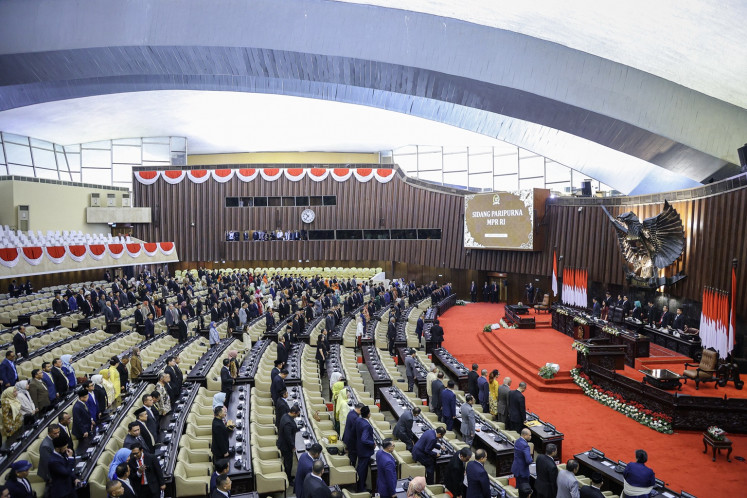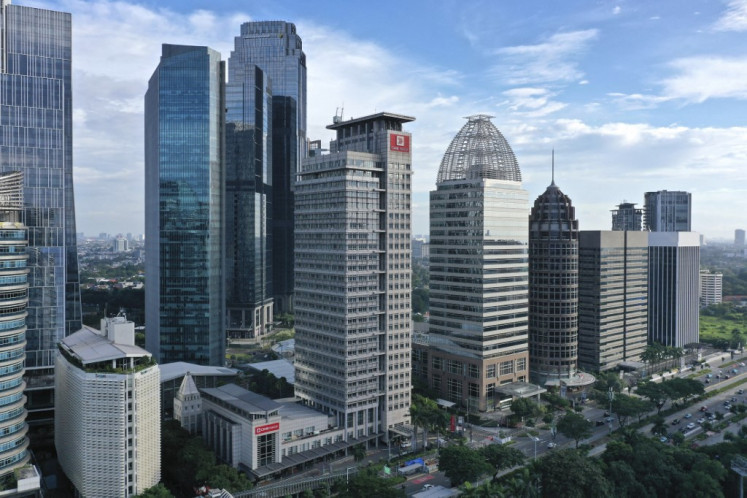Popular Reads
Top Results
Can't find what you're looking for?
View all search resultsPopular Reads
Top Results
Can't find what you're looking for?
View all search resultsGapura Wringin Lawang: A gateway to the past
Passing through: Ancient and dignified, the old city gate of Gapura Wringin Lawang stands guard in the East Java town of Mojokerto
Change text size
Gift Premium Articles
to Anyone
Passing through: Ancient and dignified, the old city gate of Gapura Wringin Lawang stands guard in the East Java town of Mojokerto. (JP/Retno K. Djojo)
Standing tall and dignified in the searing heat of Mojokerto, East Java, Gapura Wringin Lawang is a silent witness to a rich historical past.
Unlike other historic buildings in Trowulan, which in their day functioned variously as temples, gravesites, waterways and reservoirs, this majestic - it is 15.5 meters tall - and elegantly built split gate only ever served as a landmark.
Centuries ago, envoys, monks, traders and dignitaries from far and wide passed through this impressive gate, which marked the end of their long journey to reach their destination lying beyond the gate: The administrative and capital city of the Great Majapahit kingdom.
Within this historic area, known as Trowulan, which spans some 100 square kilometers, lie the palaces and homes of aristocrats and officials in charge of running an empire whose territories stretched as far as Sumatra, Malaya and Papua.
Gapura Wringin Lawang faces the Hujung Galuh river harbor near Mojokerto. Tuban, Gresik and Surabaya, which lie to the north, were at the time of the kingdom's thriving ports and commercial centers.
Traders traveled from as far as China, India, Persia, Arabia, Thailand and Vietnam to buy and sell.
Among the many archaeological treasures dug up in Trowulan are Chinese ceramics dating back to the Song dynasty (960-1279) and artifacts from Thailand and Vietnam from the 14th century. Old coins have been found in great numbers, testament to the brisk trade among regions.
And this impressive gate oversaw it all. It reflects the role and influence Majapahit played in the region. The split gate, constructed entirely from brick, has a tiered roof that rises in a slender line to the top.
The elegantly shaped roof, a full 7.85 meters high, is adorned with antefixes at the corners and fillets at the upper parts.
The gate foot, which is 13 meters long and 11.5 meters wide, rises 4.7 meters, upon which stands the 6.6 meters of the gate itself.
The first European report of this ancient gate was by Sir Thomas Stamford Raffles, who noted it in his journal The History of Java (1815).
It had sustained heavy damage after having been neglected for centuries in a dense forested area.
Raffles named it Gapura Jati Pasar, in reference to the nearest village, but the locals call it Gapura Wringin Lawang, after the hamlet within whose boundaries it stands.
Early excavations of the site uncovered 15 ancient wells with brick walls. The ancient wells, concentrated in an area southeast to southwest of the gate, could have functioned as water sources for large human settlements.
Experts speculate that this could mean that the settlements functioned as temporary shelters for envoys and the many traders visiting Trowulan on business. Continuing archaeological excavations of the site would be an interesting and challenging endeavor.
The latest phase of restoration work, which took place from 1991 to 1995, has placed the ancient split gate at the center of a park for public viewing.
But the project's meager budget (less than Rp 400 million at the time) was not enough even to reclaim the land to the north, which has been turned into a cemetery.
"Archaeological work had to be restricted to the essentials only," said Dra Hardini Sumono, from the office for the protection of ancient heritage.
Faded and battered, this piece of the past maintains its pride and dignity, but more needs to be done to restore its full historic significance.










